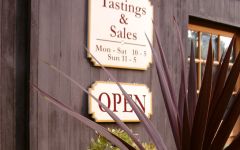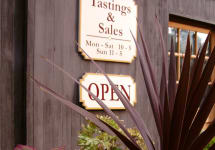Hermann J. Wiemer Late Harvest Riesling 2010
-
Wine
Spectator


Product Details
Your Rating
Somm Note
Winemaker Notes
Professional Ratings
-
Wine Spectator
Frankly sweet, with quince and fig flavors, but stays juicy, with a bright pear note. The long, mineral-tinged finish gives the sweetness a nice contrast. Drink now through 2015.
Other Vintages
2021-
James
Suckling -
Wine &
Spirits -
Robert
Parker
-
Wine
Enthusiast -
Robert
Parker
-
Wine &
Spirits -
Robert
Parker -
Wine
Enthusiast
-
Wine
Enthusiast -
Wine &
Spirits -
Robert
Parker
-
Wine &
Spirits -
James
Suckling
-
Wine &
Spirits







Hermann Wiemer was born in Bernkastel, Germany into a family with 300 years experience in making the distinguished vinifera wines of the Mosel Valley. He arrived in the United States in 1968 already well versed in the European tradition of fine winemaking. To this heritage he added the skill of grafting fragile vinifera vines onto sturdy American rootstock.
In 1973 he bought 140 acres on the west side of Seneca Lake, which he planted with a variety of European vinifera grapevines. Visitors who wish to see these vines, along with ponds and the six acre nursery, can take the popular Vineyard Walk through the property.
The Winery, which produces 12,000 cases each year, was designed in 1982 by an award winning team of Cornell architects. Enclosed within the shell of a seventy-year-old scissor-trussed barn, it accommodates a laboratory, tasting and retail sales, a wine production area and a private tasting room. Its unique white cathedral-like interior counterpoints the bare wooden walls and sleek Italian stainless steel tanks.

Apart from the classics, we find many regional gems of different styles.
Late harvest wines are probably the easiest to understand. Grapes are picked so late that the sugars build up and residual sugar remains after the fermentation process. Ice wine, a style founded in Germany and there referred to as eiswein, is an extreme late harvest wine, produced from grapes frozen on the vine, and pressed while still frozen, resulting in a higher concentration of sugar. It is becoming a specialty of Canada as well, where it takes on the English name of ice wine.
Vin Santo, literally “holy wine,” is a Tuscan sweet wine made from drying the local white grapes Trebbiano Toscano and Malvasia in the winery and not pressing until somewhere between November and March.
Rutherglen is an historic wine region in northeast Victoria, Australia, famous for its fortified Topaque and Muscat with complex tawny characteristics.

Increasingly garnering widespread and well-deserved attention, New York ranks third in wine production in the United States (after California and Washington). Divided into six AVAs—the Finger Lakes, Lake Erie, Hudson River, Long Island, Champlain Valley of New York and the Niagara Escarpment, which crosses over into Michigan as well as Ontario, Canada—the state experiences varied climates, but in general summers are warm and humid while winters are very cold and can carry the risk of frost well into the growing season.
The Finger Lakes region has long been responsible for some of the country’s finest Riesling, and is gaining traction with elegant, light-bodied Pinot Noir and Cabernet Franc. Experimentation with cold-hardy European varieties is common, and recent years have seen the successful planting of grapes like Grüner Veltliner and Saperavi (from the Eastern European country of Georgia). Long Island, on the other hand, has a more maritime climate influenced by the Atlantic Ocean, and shares some viticultural characteristics with Bordeaux. Accordingly, the best wines here are made from Merlot and Cabernet Franc. The Niagara Escarpment is responsible for excellent ice wines, usually made from the hybrid variety, Vidal.
